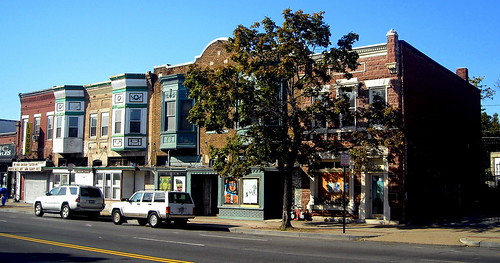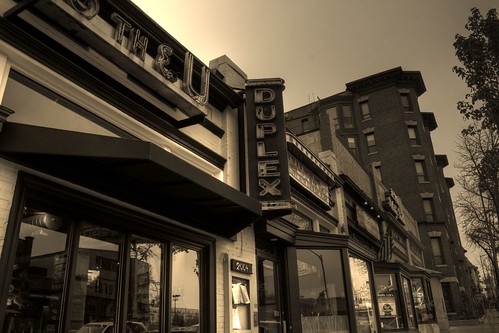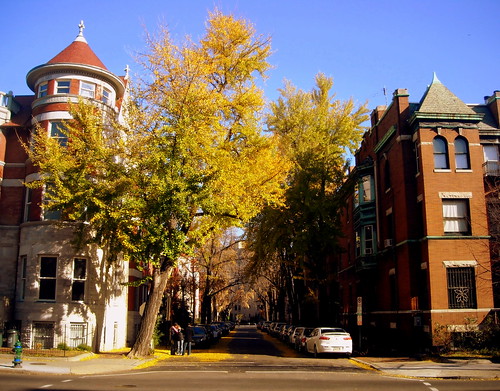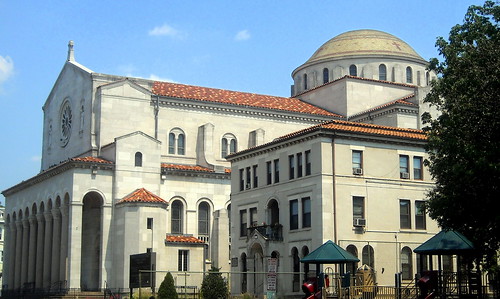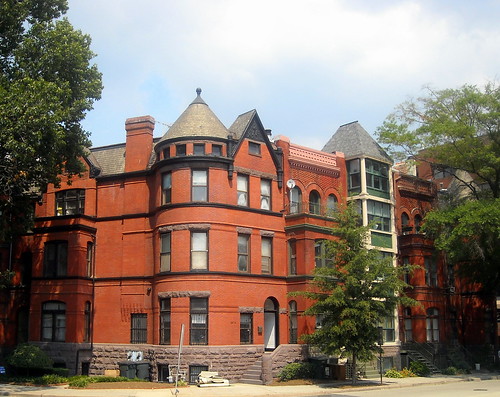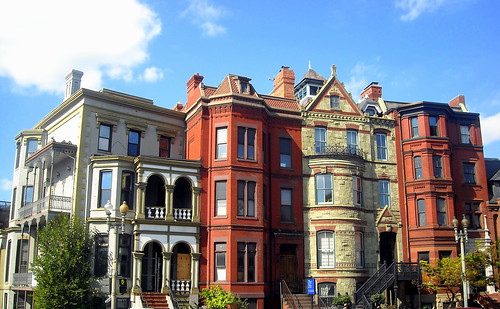
‘Penn Quarter’
courtesy of ‘M.V. Jantzen’
Another two weeks, another neighborhood! This week we’ll be looking at the neighborhood at the center of it all: Penn Quarter. This neighborhood encompasses much of the downtown/Chinatown area north of Pennsylvania between 5th Street NW and 9th Street NW. It’s a neighborhood that changed a lot in the past decade, seeing as it didn’t really exist before the 1990s.
History: This neighborhood is once again the heart of downtown DC, but up until recently it went through a pretty rough patch. Because of its central location, the area was the hub of activity in the city up through the mid-twentieth century. Theaters, department stores, streetcar lines, restaurants, offices– this was the heart of the city (check out Washington Kaleidoscope’s Lost Washington series for historic photographs of the area). But the streetcar lines were torn out, theaters were shuttered, and department stores closed their doors when the population base of the city escaped to the suburbs in the 1950s and 1960s. Apparently President Kennedy commented on the sad state of this part of Pennsylvania Avenue during his inauguration, and in 1962 the President’s Council on Pennsylvania Avenue was established.
The President’s Council proposed a number of redevelopment projects in the area (including plans for a Freedom Plaza that would have rivaled the size of Moscow’s Red Square), and in 1972 the Pennsylvania Avenue Development Corporation (PADC) was founded to guide the redevelopment. The PADC got a lot of things done: the Federal Triangle area was redeveloped and the Ronald Reagan Building was completed, the Canadian embassy was built, and a bunch of new mixed-use projects were undertaken in the Penn Quarter area. The MCI Center (now Verizon Center) was a crowning achievement for the area when it opened in 1997. With its sports events and concerts, it attracted restaurants and stores to locate in the area. After the first stage of retail development, new downtown housing was built throughout the area, thus creating the neighborhood of Penn Quarter. Today, the area is the most vibrant and active of the District’s neighborhoods– it’s hard to believe that fifteen years ago, it was considered to be an abandoned and dangerous part of town.
